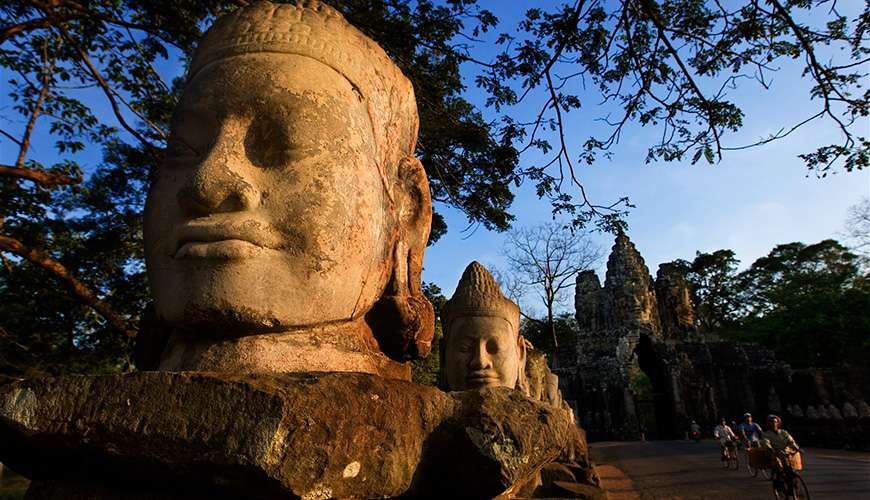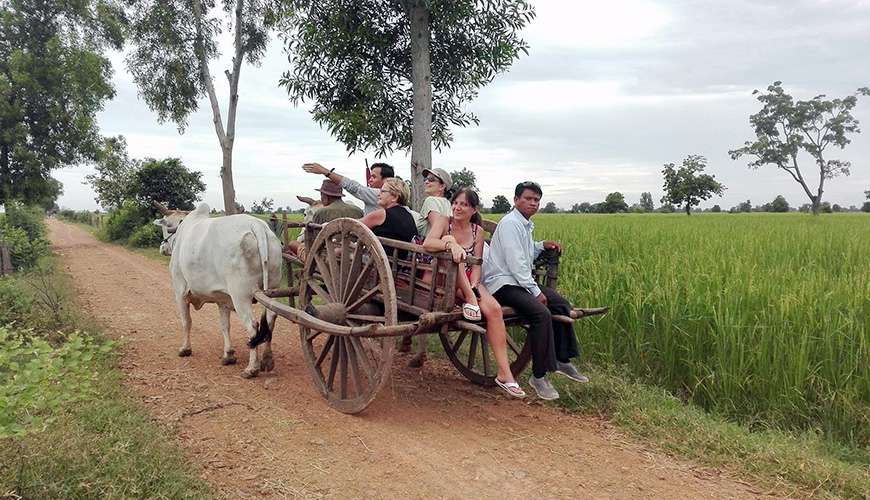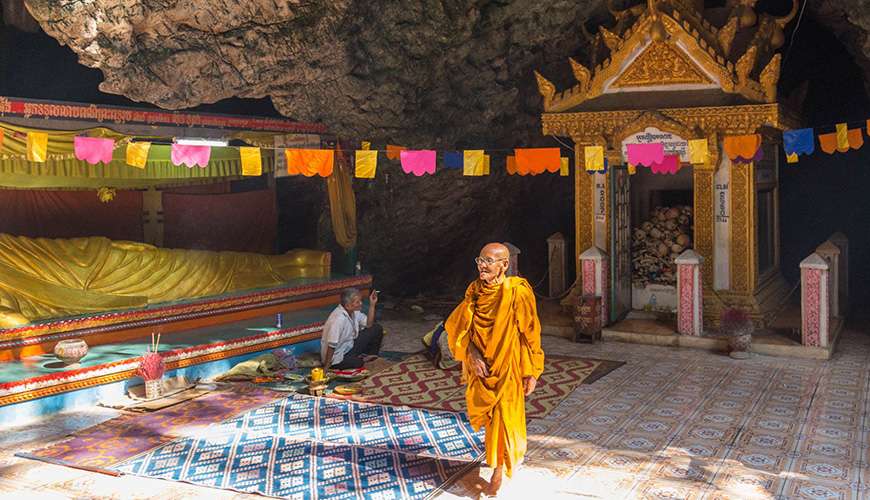Separated from Thailand by the Dangrek Mountains and Laos by highlands,
Northern Cambodia, and indeed the country as a whole, is a land steeped in rich history. Consisting mostly of the northern half of the fertile Tonle Sap basin, the Mekong river forms the boundary between Northern Cambodia and the Highlands of Eastern Cambodia.

One of the many giant statues in Angkor, undoubtedly Cambodia’s most famous attraction.
In ancient times, during the country’s golden age, it was ruled by the powerful Khmer Empire, which dominated Indochina and Southeast Asia as a whole, until it went into a centuries long decline and finally collapsed for complex and not entirely understood reasons in the 15th century.
The fall of the Khmer ushered in what is now known as the “Dark Ages of Cambodia” where constant pressure from neighbouring Siam and Vietnam eventually led to the country accepting French Protectorate status and becoming part of the French colony in Indochina.
The period of Khmer Rouge rule from 1975-1981 left deep scars that can still be felt today. The brutal regime and the genocide they carried out would result in the deaths of approximately 25% of the entire population, and this fact is still visible in the demographics in the country.

A taste of rural life and transportation.
The people in the region are incredibly friendly, as well as eager for travellers to visit their country and eventually for it to be known for something different than the dark days of the genocide.
The temperature is consistent all year round, averaging in the low 30’s. Like most of South East Asia the climate is defined by the monsoons, with the southwestern monsoon bringing the rainy season from May to October, and a following dry season between October and April, caused by the northeastern monsoon.
The star of the show is obviously Siem Reap and the famous Angkor Wat temple complex nearby. While Angkor Wat itself is certainly the biggest and most famous, there are dozens upon dozens of extraordinary temples here, some battling the encroachment of nature while others feature stunning man-made lakes.
Battambang to the southwest of Siem Reap is wonderfully relaxed. Walking around its streets and watching the people, old colonial architecture and myriad of statues is almost hypnotizing, but there’s plenty to do out of town as well including several temples and the sombre “Killing Caves” of Phnom Sampeu.

A sombre shrine commemorating those who lost their lives to the genocide.
The Mekong is the life-blood of Cambodia, so it should be no surprise that freshwater seafood forms an integral part of their cuisine. Samlor is an example of this, a thin soup created from fish paste. The dishes share a lot in common with neighbouring Thailand and Vietnam, while drawing influence from French and Chinese cuisine. Unlike Thailand though, the food is not spicy, and there are nearly no dishes containing chili of any kind.
In short, while Northern Cambodia is still coloured by its tragic past, it’s a joyful place to be. Always smiling, the people will welcome you with open arms should you decide to visit, and you will fall in love with the magnificent ruins at Angkor Wat, chilled Battambang and the friendly people everywhere.